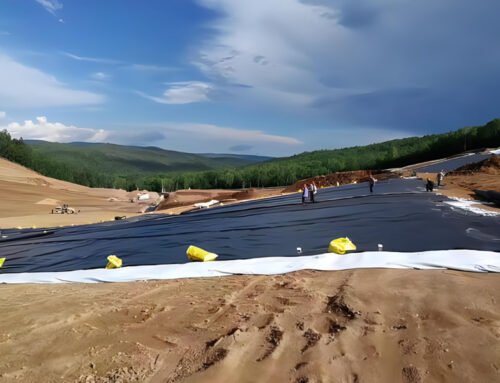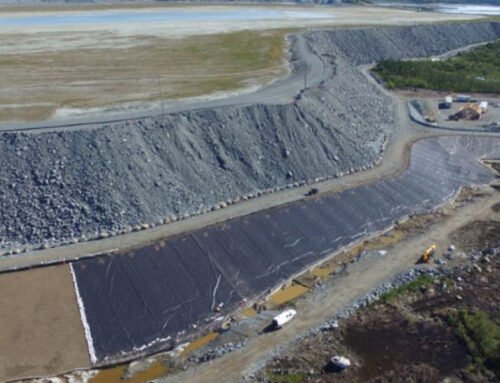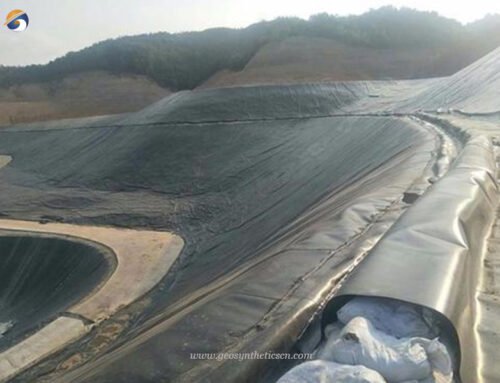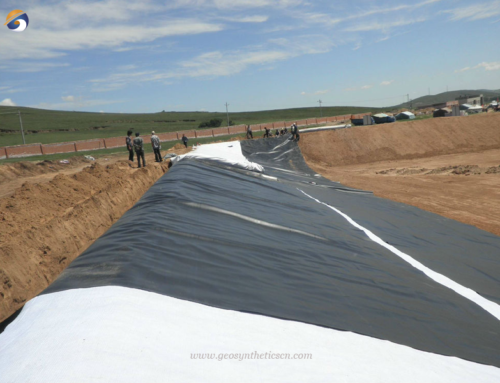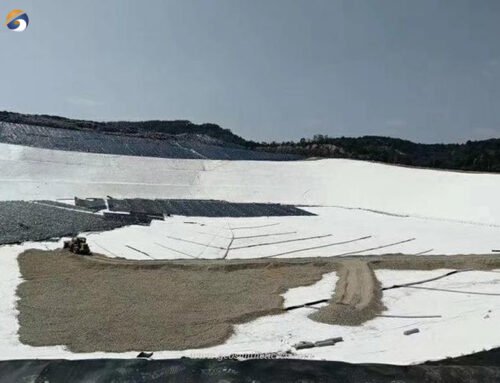Composite geomembrane liner is a type of impermeable material that combines geotextile and geomembrane liners. It is specifically designed for anti-seepage purposes in civil engineering and environmental applications. Composite geomembrane is commonly used in various applications such as landfill lining, reservoirs, ponds, mining operations, and other projects where anti-seepage measures are required for environmental protection and resource management.
1. What Is A Composite Geomembrane Liner?
A Composite Geomembrane Liner is an impermeable material created by heat-bonding a geotextile with HDPE geomembranes. It combines the benefits of geotextiles and geomembranes into a single product. Configurations may include one geotextile and one geomembrane or two geotextiles and one geomembrane, offering different levels of reinforcement, filtration, and protection. The geotextile layer enhances tensile strength, filtration, and protection, while the geomembrane layer, typically made of HDPE, ensures impermeability. Composite geomembrane liners are used in various applications due to their durability, impermeability, and resistance to tearing and puncturing.
Composite geomembrane liners find extensive use in various applications, including landfills, wastewater treatment facilities, road construction, aquaculture projects, landscaping, and agriculture. They offer reliable performance, moisture resistance, and resistance to tearing and puncturing.
2. What Are Problems of Industrial Waste Treatment in Thailand?
2.1 Challenges of Industrial Waste Accumulation:
- Industrial waste accumulation consumes land space and risks soil pollution.
- Harmful components in piled waste can contaminate soil and water sources.
- Runoff or seepage may carry pollutants into water bodies, posing health risks.
2.2 Types and Examples of Industrial Waste:
- Industrial waste encompasses materials left over from factory or mine production.
- Examples include paint, metal fragments, radioactive waste, and various industry-specific residues.
- The diverse composition and quantity of industrial waste pose environmental challenges.
2.3 Impact and Management of Industrial Waste:
- Industrial waste includes hazardous materials that can disrupt ecological balance.
- Proper processing can transform waste into raw materials or energy sources.
- Effective management is crucial to mitigate land occupation, pollution, and health risks.
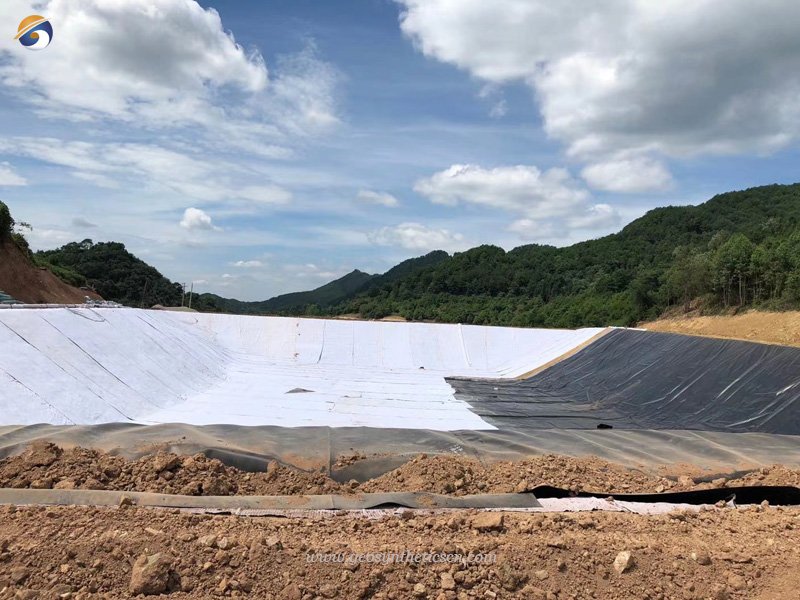
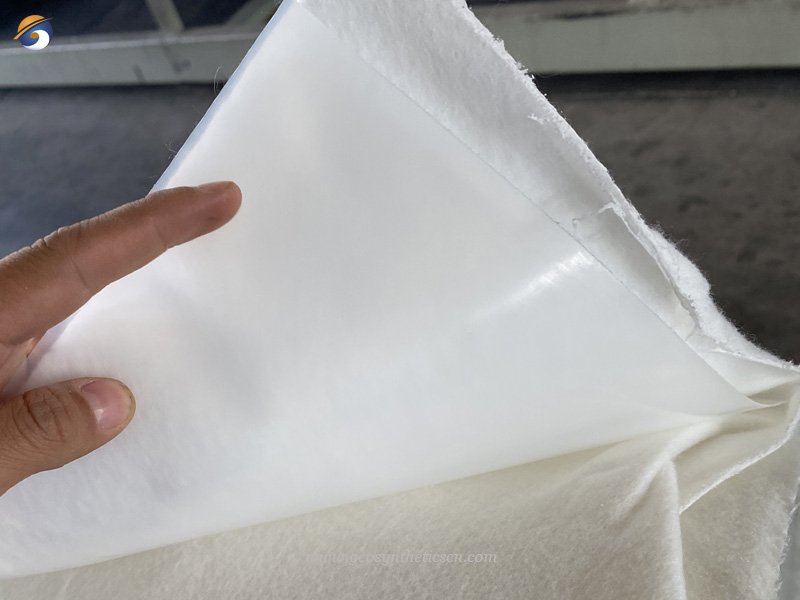
3. Solution of Composite HDPE Liner for Industrial Waste Treatment
The Thailand customer’s industrial waste treatment site is located in a valley depression. In order to prevent rainwater and sewage from infiltrating, a composite geomembrane is laid on the surface of the valley and the slope. The design considers that the subsidence of the backfilled soft soil will cause the composite geomembrane to collapse. Tensile force requires high tensile strength. Finally, GEOSINCERE composite geomembrane was selected, with a width of 4m. The area was further bonded on site to expand the area. One end should be anchored at the top of the slope before the composite geomembrane is positioned vertically and fixed by piles. The pile distance is 15~20m. The piles pass through the holes formed by the composite geomembrane. The cloth is about 3mm thick and 4m wide.
Composite geomembrane liner is made of PET staple fiber geotextile and HDPE geomembrane through thermal compounding. It has high mechanical performance indicators such as tensile resistance, tear resistance, and bursting. It has high strength, good elongation, large deformation modulus, and acid resistance. Alkali anti-corrosion, aging resistance, good anti-seepage performance, etc. Geotextile has large surface friction, good anti-skid effect, simple construction, reliable quality, and improved work efficiency. The composite geomembrane liner is a kind of anti-seepage material with good economic and technical performance.
4. What Are Benefits of Composite Geomembrane Liner Thailand for Industrial Waste Treatment?
The use of composite geomembrane liner in industrial waste treatment in Thailand offers several benefits:
4.1 Tensile Strength and Tear Resistance
The composite geomembrane liner possesses high tensile strength and tear resistance, ensuring its durability and ability to withstand the stress and pressures associated with industrial waste treatment operations.
4.2 Bursting Strength and Extensibility
The liner exhibits high bursting strength and strong extensibility, allowing it to withstand the pressure exerted by the waste materials and accommodate any movements or settlements in the underlying soil.
4.3 Corrosion Resistance
Industrial waste often contains corrosive substances. The composite geomembrane liner is designed to resist corrosion, protecting it from degradation and maintaining its integrity over time.
4.4 Low Temperature and Frost Resistance
The liner is capable of withstanding low temperatures and frost, ensuring its effectiveness even in challenging environmental conditions.
4.5 Puncture and Damage Prevention
The composite geomembrane liner acts as a protective barrier, preventing punctures and damage that could compromise its anti-seepage properties and the containment of industrial waste.
4.6 Drainage Capability
The liner allows for the drainage of water accumulated on its backside, preventing water vapor buildup and ensuring stability. This drainage capability helps to maintain the liner’s effectiveness and prevents slippage.
4.7 Enhanced Friction Coefficient
The liner’s presence enhances the contact friction coefficient of sand and pebbles, providing stability and preventing shifting or movement of the waste materials and underlying soil.
4.8 Convenient Construction and Cost-Effectiveness
The composite geomembrane liner is lightweight, easy to handle, and can be constructed efficiently. Its installation and construction processes are convenient, resulting in cost savings for industrial waste treatment projects.
The application of composite geomembrane liner technology is widespread, finding use in various sectors such as water conservancy projects (reservoir areas, dams, cofferdams, etc.), transportation infrastructure (railways, highways, tunnels), urban construction, agriculture, and mining. Its versatility and anti-seepage capabilities make it an ideal choice for managing and containing industrial waste effectively.
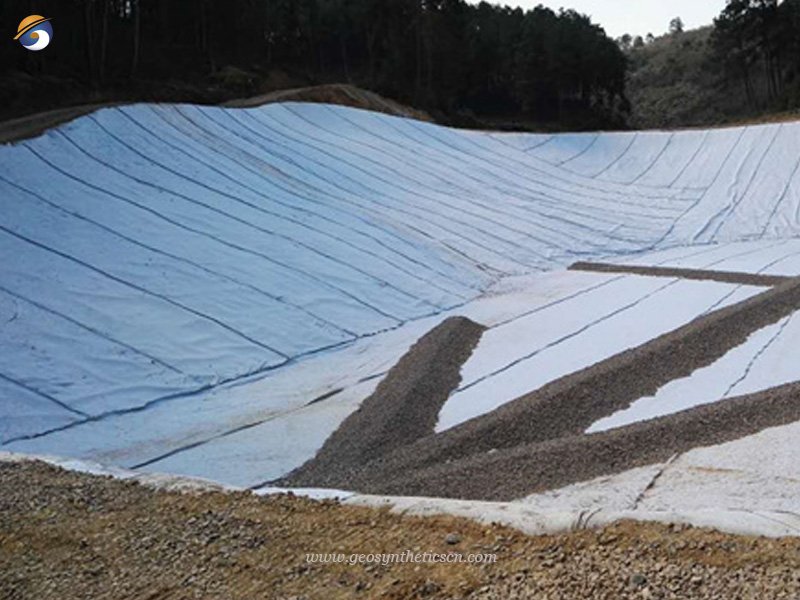
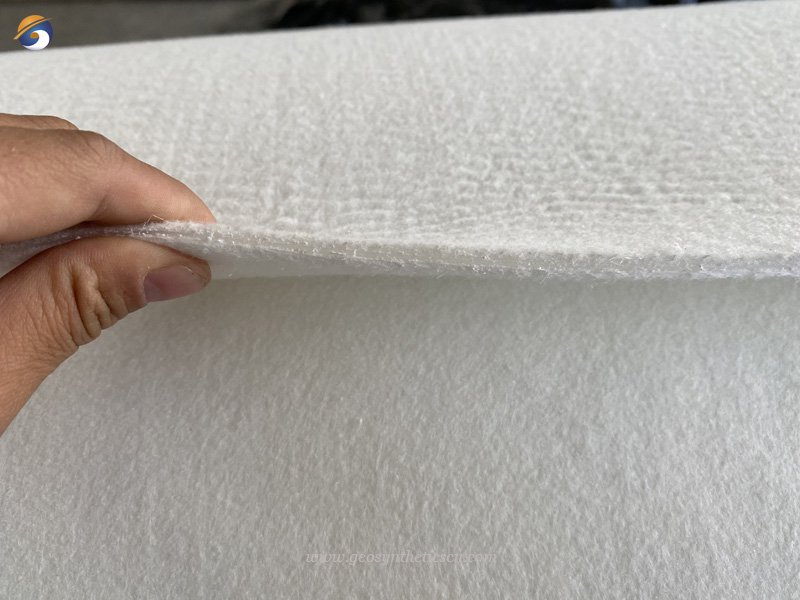
5. Specifications of Composite Geomembrane Liner for Industrial Waste Treatment in Thailand
- Total quantity of composite geomembranes – 4,0000 square meters
- Specification of Composite Geomembrane – 1.0mm HDPE Geomembrane with 200g PET staple fiber Geotextile
- The size of each roll of polyethylene lined geomembrane is 4m*100m
6. Summary
Composite geomembrane liner is an impervious material composed of geotextile and geomembrane. It is mainly used for anti-seepage, with a width of 4-6m and a weight of 200-1500g/m2, which can meet the requirements of water conservancy, municipal, construction, transportation, subway, tunnels and other civil engineering needs. Due to the selection of polymer materials and the addition of anti-aging agents in the production process, it can be used in unconventional temperature environments.
Composite geomembranes are widely used in anti-seepage of reservoirs, canals, river embankments, lake dams, and ash dams of power plants; anti-seepage of sugar factories, chemical plants, fertilizer plants, sewage treatment ponds, waste residue treatment ponds, artificial lakes; anti-seepage lining of tunnels, anti-seepage of central green belts of expressways processing etc.
GEOSINCERE has been dedicated to manufacturing wholesaling geotexitle and geosynthetics products and solutions to worldwide customers since its foundation in 2007. GEOSINCERE offers both high quality geosynthetic products but also professional design and installation service.

